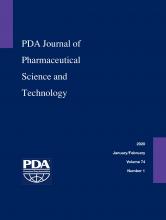Abstract
Urea is used in biopharmaceutical manufacturing processes for the purification of therapeutic proteins, for cleaning columns, and for refolding proteins after purification. The urea used for such purposes is typically USP grade material obtained from commercial sources and further characterization is required prior to use, such as determination of purity and identity. For this purpose, a robust analytical method is needed that can characterize the known organic impurities of urea. However, the existing methods show high assay variability and are not able to resolve all known organic impurities as desired for accurate quantification. In the present manuscript we developed a new high-performance liquid chromatography method with UV detection for the separation of urea and its impurities (biuret, cyanuric acid, and triuret). The method performance characteristics evaluated for urea and biuret were specificity, linearity, accuracy, identity, precision, and robustness and the newly developed method met all predefined performance acceptance criteria.
- © PDA, Inc. 2020
PDA members receive access to all articles published in the current year and previous volume year. Institutional subscribers received access to all content. Log in below to receive access to this article if you are either of these.
If you are neither or you are a PDA member trying to access an article outside of your membership license, then you must purchase access to this article (below). If you do not have a username or password for JPST, you will be required to create an account prior to purchasing.
Full issue PDFs are for PDA members only.
Note to pda.org users
The PDA and PDA bookstore websites (www.pda.org and www.pda.org/bookstore) are separate websites from the PDA JPST website. When you first join PDA, your initial UserID and Password are sent to HighWirePress to create your PDA JPST account. Subsequent UserrID and Password changes required at the PDA websites will not pass on to PDA JPST and vice versa. If you forget your PDA JPST UserID and/or Password, you can request help to retrieve UserID and reset Password below.






